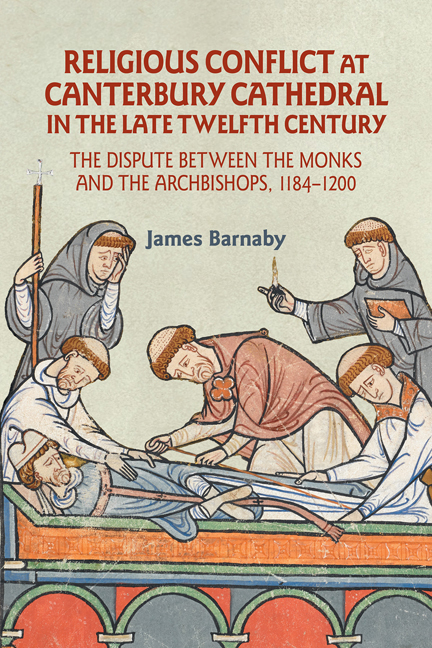 Religious Conflict at Canterbury Cathedral in the Late Twelfth Century
Religious Conflict at Canterbury Cathedral in the Late Twelfth Century In the conclusion to his introduction of the Canterbury letters, Stubbs condemned the monks for their resistance to the archbishop, stating that the ‘Hackington and Lambeth foundations may be regarded as the last attempt to utilise the property of the monasteries before the Reformation’. For him, the case was never tried on its merits and the monks are condemned for wasting the church's resources on appeals to Rome. In his opinion, the archbishop's plan was a good one. It would have:
Served to provide for the learned and legal clergy, and have left parochial endowments to their natural purpose⦠It was partly with this view that Henry II and his ministers encouraged the design of Baldwin; and this, like every effort after the reformation that proceeded from the bishops, was foiled by the appeal to Rome.
This disparaging and anti-papal viewpoint is primarily due to Stubbs's Protestant faith rather than an objective assessment of the conflict. Irrespective of whether the proposed foundation was the last attempt to utilise monastic property, the monks were not wrong to resist the archbishops’ plans. They were not fighting for themselves, but to preserve the convent's rights and privileges for future generations; appealing to Rome was the only method they had. Endowing a new collegiate church was unlikely to free up parochial endowments for their ‘natural purpose’ but would simply have created a new source of patronage for the archbishops. Clearly, the metropolitans felt they needed this extra resource to have persisted in their efforts for almost fifteen years. However, after the final settlement in 1200, Hubert dropped the scheme. He never built a Premonstratensian house at Lambeth, nor did he get permission to build a secular college.
Stubbs is correct in claiming that the Canterbury case was never tried on its merits, if he considers the merits to be what the new church could achieve, such as a regular source of income for scholars and secular clergy who engaged in archiepiscopal administration. But this is not what the dispute was about; rather it concerned the impact the new church would have on the community at Canterbury. The monks feared it would ruin them, and they were probably right. Baldwin was clearly building his new church in honour of Becket and believed his plan was a continuation of the martyr's proposal, left unfinished due to his murder.
To save this book to your Kindle, first ensure [email protected] is added to your Approved Personal Document E-mail List under your Personal Document Settings on the Manage Your Content and Devices page of your Amazon account. Then enter the ‘name’ part of your Kindle email address below. Find out more about saving to your Kindle.
Note you can select to save to either the @free.kindle.com or @kindle.com variations. ‘@free.kindle.com’ emails are free but can only be saved to your device when it is connected to wi-fi. ‘@kindle.com’ emails can be delivered even when you are not connected to wi-fi, but note that service fees apply.
Find out more about the Kindle Personal Document Service.
To save content items to your account, please confirm that you agree to abide by our usage policies. If this is the first time you use this feature, you will be asked to authorise Cambridge Core to connect with your account. Find out more about saving content to Dropbox.
To save content items to your account, please confirm that you agree to abide by our usage policies. If this is the first time you use this feature, you will be asked to authorise Cambridge Core to connect with your account. Find out more about saving content to Google Drive.